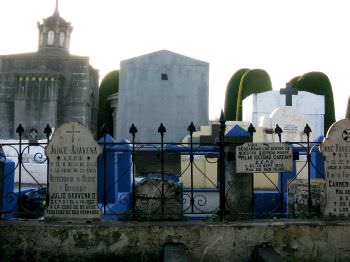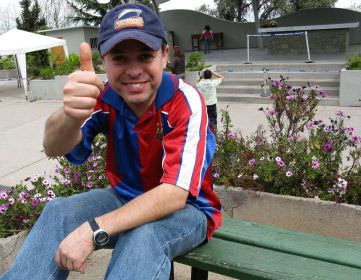As an employee of the Las Torres Hotel single-handedly carried my two 40-lb bags from the bus to the room where I’ll be staying, I noted in Spanish, “This would really be much easier if my luggage had kneecaps.”I don’t think that’s the sort of statement you can agree with, even just to be nice. The bag carrier, who could speak some English as it turned out, kindly corrected me.
“Rodillas means kneecaps,” he said. “Ruedas is wheels.”
All that’s to say, I have arrived at the Torres del Paine National Park, where I’ll be living and working for the next eight months. And I can’t stop looking at Almirante Nieto, which rises 8,760 feet over my new home. Every time I walk outside or glance out a northwest-facing window, I have to stare. The mountain is tremendous, and right in my backyard. There’s so much going on up top, what with the patches of snow, the glaciers and occasional avalanches, the clouds that move in and out throughout the day. As an added perk, the three towers that gave the park its name peek out from behind Almirante. I need to go on a long hike.
The day I arrived, my boss Christian Morales drove me around the property in his gray pickup truck. He showed me around the pricey Hosteria Las Torres, which anchors the property, as well as the pump sheds and stables that keep in running.
Then, my assignment was to “get to know” the refugio where I’ll be working — the people, the business. I started by heading to the kitchen, where I was first offered a cup of coffee, then to share a plate of fries, hard boiled egg and sautéed meat with a group of employees. I accepted. The experience of eating everything I was offered, I’d say, really taught me a lot about the company.
Really, it did. Fantastico Sur is a Chilean company that runs four refugios, or hiker hostels, in various locations in the park. The refugios, named Chileno, Cuernos, Torre Norte and Torre Central (where my office will be located), house between 32 and 54 beds each, bunk-house style, plus a restaurant and bathrooms with showers. In Torre Central, where I’ve spent my time these last two days, there’s also a sitting room heated by a wood stove that has bean bags and a huge hammock — for hanging out, you know.
 In two weeks, Christian said Torre Central will add two sunken Jacuzzis to its front lawn, so guests can soak in the water and sip wine as they stare at Almirante. Renting a bed for a night costs around $33. Breakfast sets you back $8, lunch $12 and dinner $14. Camping in the sites near each refugio is another option, one that costs around $6.50 a night.
In two weeks, Christian said Torre Central will add two sunken Jacuzzis to its front lawn, so guests can soak in the water and sip wine as they stare at Almirante. Renting a bed for a night costs around $33. Breakfast sets you back $8, lunch $12 and dinner $14. Camping in the sites near each refugio is another option, one that costs around $6.50 a night.
You might think that’s all, but it isn’t; Fantastico Sur also organizes guided treks, birding excursions, etc. for its guests, AND it publishes nature guides about birds, plants and albatrosses. The idea is to help educate tourists about the environment and how to safely interact with it. That is the message I will be in charge of getting out.
I’ll be living in a wooden cabin crammed in a mini-valley with about five others that belong to park guides, maintenance people, cowboys, etc. My place is one of the three still under construction, and the builders can’t exactly find the keys to the locked bedrooms, one of which I will share with a roommate. But they expect to finish building in a week or two — and find the keys. My living situation looks like it will be much cozier and spacious than I expected.
To protect myself from pumas, the main predator here, Christian has advised me to run wherever I go and “baaaah” like a sheep. I have nothing to worry about, he said, if I follow those directions. Pumas can leap over 21 feet, I learned from a documentary video I watched Thursday morning. I think that means I need to run extra fast and “baah” extra hard.












